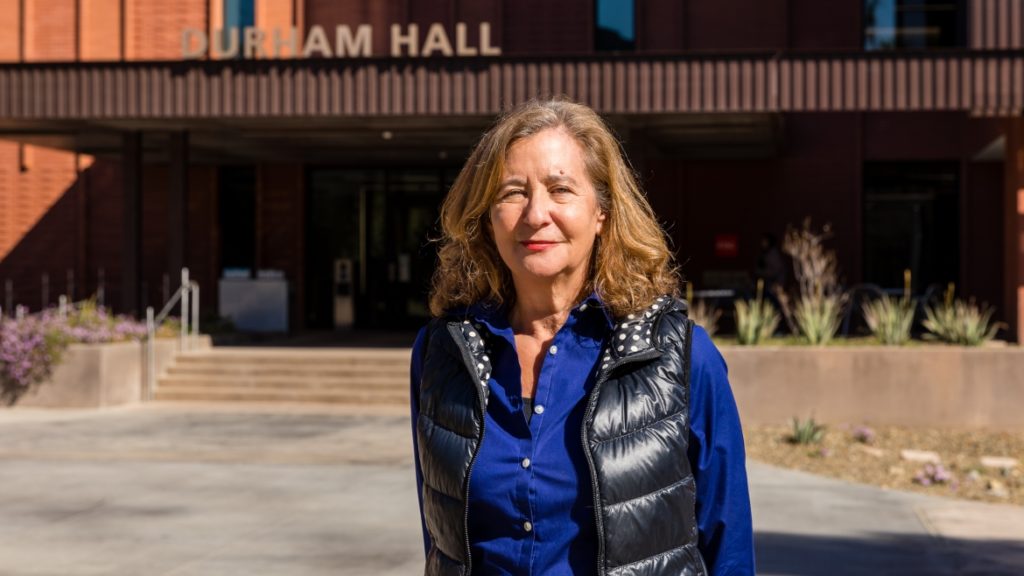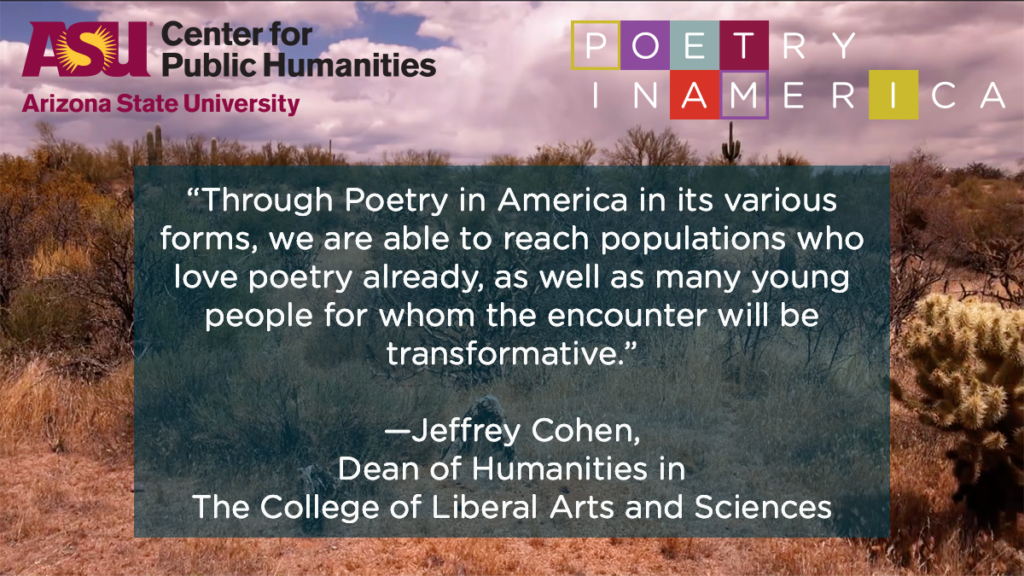Westward, Ho! Poetry in America arrives at ASU

T.S. Eliot’s The Wasteland begins: “April is the cruelest month.” In 1996, the American Academy of Poets declared the very same cruel April National Poetry Month, with a winking awareness to Eliot’s famous phrase.
Kristen LaRue-Sandler’s April 6th, 2022 interview with Elisa New for ASU News begins with a reference to this irony. If National Poetry Month is cruel, than by extension, so is the experience of reading poetry—which for many Americans, especially those who read The Wasteland in high school, might ring true.
However, this reputation for cruelty, and poetry’s bad rap as elitist, indecipherable, or inaccessible, is why April is the busiest month for Professor New—as she works, in LaRue-Sandler’s words, “to combat these inaccurate representations and garner the art form a larger audience.”
Professor New does “that by becoming a storyteller,” trying to illuminate poems with video by asking, first, “What’s the visual story?” As LaRue-Sandler says of the Poetry in America PBS show, “Viewers encounter these ‘visual stories’ as they are guided through the verse in a mélange of images, textures and sounds. The effect is not disorienting or trite, but rather an unassuming, even joyful exploration of each poem’s many layers.”
After a “taking stock” moment in 2020, Professor New headed west to accept a new position at Arizona State University: “After having taught at two highly selective universities,” she said, “I really wanted to be, at this stage of my career, reaching wider populations of learners. There was a lot of scale possible.”

She says of her new role directing ASU’s Center for Public Humanities: “I want to be reaching 12-year-olds, and I want to be reaching experts, and I want the poets—the living poets whose work I bring to TV—to really think I’ve done a good job,” she said. “And so that keeps me working hard.”
